10 Impactful Tips For Teaching Vowel Teams
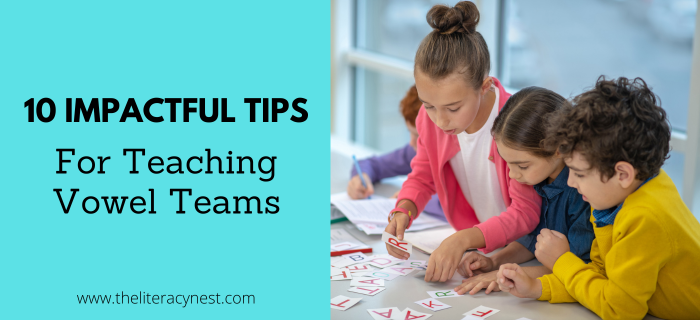
Some of the mountains that our struggling readers must climb are bigger than others. One skill that we must introduce fairly early on, but that will take a long time to master is the vowel team syllable. Let’s look at some tips for teaching vowel teams.
In principle, the vowel team syllable is easy to spot and easy to understand. There are two (or more) vowels together that make a sound. However, the reality is that there are many, many vowel teams. Often, a vowel team can make more than one sound AND most sounds have more than one vowel team spelling. These factors make this a tricky and ongoing learning process.
If you’ve been searching for appropriate resources for your Orton-Gillingham lesson plans, be sure to check this vowel teams category.
Here are Ten Teaching Tips for Vowel Teams
Download a printable version of this teaching vowel teams tip sheet!
1. Teach vowel teams back-to-back
Try not to teach all the vowel teams back to back when following Orton-Gillingham lesson plans or reading intervention programs. Students need an opportunity to practice and solidify their learning. Adding too many vowel teams at once is likely to lead to confusion.
Placing lessons on spelling rules or suffixes or even r controlled vowels in between some of the vowel teams is wise.
2. Start with more common vowels
There’s no right or wrong order to teach the vowel teams, but I think it is helpful to start with the more common vowel teams and the vowel teams that have a clear spelling generalization. For example, ai and ay are both common and also have a predictable pattern of use. I think ai, ay, ee, oa, ou, and oo are good vowel teams to start with.
Take a look at the progression chart I follow. You’ll notice it has some vowel teams that appear to be listed to teach back-to-back, but a word of caution. You should be spacing them out by weaving in lessons and skills on the right-hand side of the chart. For example, even though it may appear ee and ea look like they are taught back to back, it is not recommended to do so.
I suggest teaching ee. Then hop to the right side to teach some spelling generalizations like k and ck. THEN, when ee is spaced out enough from an ea lesson, do vowel team ea.
3. Teach less common vowels and punctuation later
I typically save oe and ey until after I have taught ea like eat, ow like snow and ow like plow, both sounds of oo, and the accompanying spelling generalizations. Depending on what scope and sequence you follow, this may vary, but I teach some of the less common vowel teams like oi, oy, aw, au, ou like soup, and ea like bread or steak, even later on.
Read this for more practical ideas and tips for teaching spelling generalizations.
4. Be aware of often untrue generalizations
Be careful of generalizations such as “When two vowels go walking, the first one does the talking”. This is untrue often enough that it is problematic (ey in they, ie in thief, ou in shout, ow in plow, ea in bread and steak, etc.)

5. Differentiate between vowel digraphs and diphthongs
It may not be helpful for struggling learners to be able to differentiate between vowel digraphs and diphthongs. The definitions are a bit fuzzy even for adults.
For the purposes of reading and writing, I find it most helpful to talk about all of them as vowel teams and talk about the kinds of sounds they make as long sounds, short sounds, or something else. For example, it is helpful for a child to know that oi says /oy/ as in boil and that this sound is neither long nor short.
However, the finer points of how it glides from one vowel to another to make that sound is most likely not necessary unless there is an articulation issue. Additionally, vowel teams can be 2, 3, or even 4 letters, so using the term digraph is not always going to be the most accurate.
6. What about Y and W?
For the purposes of reading and writing, y and w act as parts of the vowel team, not as consonants.
7. Work on spelling choices
Be transparent with students about the frequency of use and some of the tricky parts of spelling or pronunciation choices. Sometimes you need to try both pronunciations to know which one is correct and sometimes you can’t be sure which spelling choice is correct, but if you know the relative frequency, you can make an educated guess.
Develop a system for working on spelling options whether it is a running list of words that the student knows, a picture story, or drawing connections between the words.
In Visualizing Spelling Choices, you’ll find practical ideas for helping children make appropriate grapheme choices. I think you’ll love the frequency graphs!
8. Introduce homophones
Along with teaching about spelling choices, as you go, introducing homophones during your instruction on vowel teams is a good idea. They come up more and more frequently at this point and working to gradually build an aptitude with them is helpful.
I have students create a growing homophone picture dictionary in the back of their Orton-Gillingham notebooks. Having the visual really helps spelling to stick and reinforces the importance of meaning rather than memorization.
9. What says? and SOS
Build abundant vowel team practice into What says? and SOS. I try to have students write the known spellings for all the long vowels during each lesson. I use a consistent keyword to spark their memory. There are also many helpful mnemonics to help with remembering the many spelling options such as the many sounds of long e. Sometimes it is most helpful and memorable to have the child make up their own silly image or sentence.
For more information about SOS, read Using the S.O.S. Strategy.
10. Make it multisensory
Ultimately, we want students to view vowel teams as a unit. We can help foster this by having students mark the vowel teams, trace the entire vowel team as a unit, color coding the vowels, using letter tiles or magnets that lump together the letters as a unit, using building blocks or unifix cubes that lump vowel teams together.
For more teaching tips, please refer to part four in my syllable series on teaching vowel teams.
The vowel team mountain can seem overwhelming when students are first starting out, but with lots of practice and support, students will be rattling off the many spellings for long e in no time. The effort is worthwhile because the view from the top is fabulous.
For links to all of my vowel team resources, go to the Vowel Teams category in my TpT store.
Syllable Types Vowel Teams Activities
You can use this syllable type resource to teach vowel team syllables and vowel diphthong syllables. It was created to teach an introduction to vowel team and vowel diphthong syllables with one-syllable practice. It is compatible with the Orton-Gillingham approach, dyslexia intervention, and other reading interventions. This resource may be used in a 1:1 setting, small group, or even whole class instruction, depending on your needs.
You can grab it in The Literacy Nest Shop or on TpT.
If you’re interested in more in-depth vowel team syllable type practice. Grab your syllable freebie here.
Are you looking for a list of words with vowel teams? Word List Builder has got you covered!
Save time searching for words with vowel teams! Create customized and meaningful review, build your folder of words, create templates and games, and much more in Word List Builder.






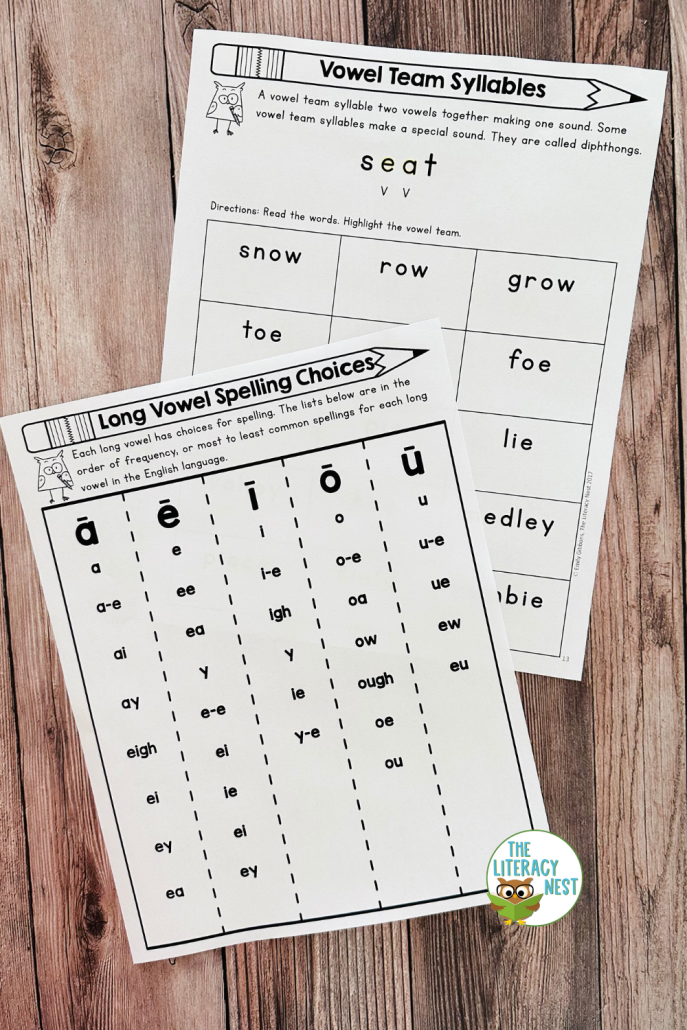
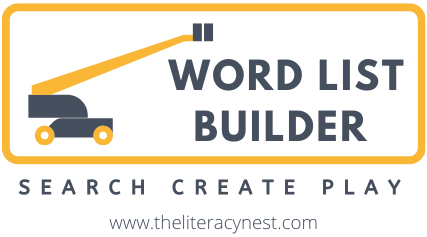
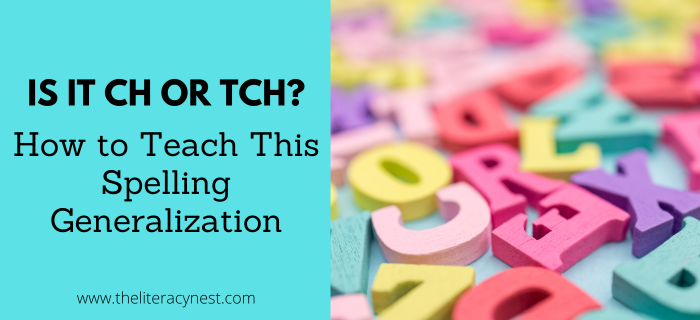

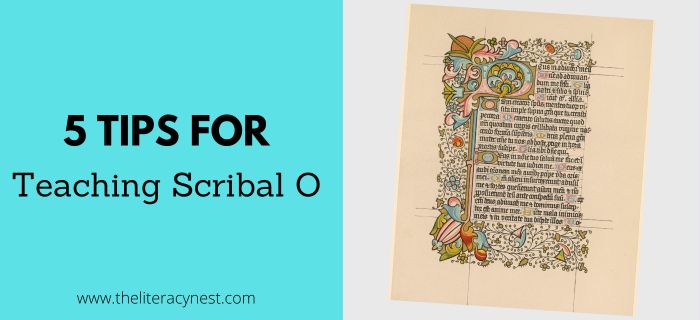


Hi Emily,
I am so grateful for all the resources you share with us. I was wondering where you purchased the double holder I've seen in pictures. It has a place for a dry erase board and marker. That would be so helpful. Thank you. shagschoppe@gmail.com
Fine information of this article. 1z0-978 dumps